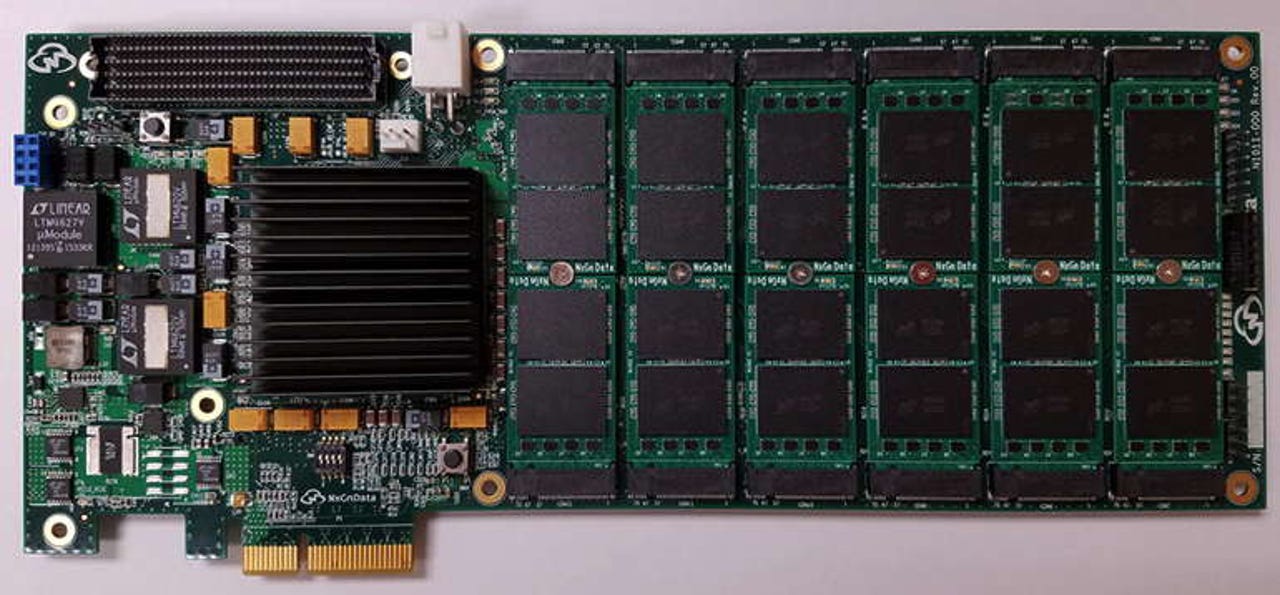NGD Systems 24TB Catalina SSD


A 24 TB SSD
NGD Systems ' new 24TB Catalina PCIe SSD isn't aimed at the performance hungry database market. Quite the opposite.
The super dense PCIe card is aimed at markets where data is rarely written and may be frequently accessed. But why would penny pinching data center managers give up cheap tape and slightly less cheap disk for more costly flash storage?
Use cases
The Catalina is aimed at the data center's cold archive tier, video streaming, 4k video storage, and, the storage of large data set metadata, not transaction intensive performance workloads. The company has patented advanced error correction that enables them to use the cheapest flash and still achieve extremely high reliability. They're ready for quad-level flash when it comes out in the next couple of years.
CEO Nader Salessi is particularly proud of the Catalina's Elastic FTL (flash translation layer - the software that makes flash look like a disk). With such a large capacity, the amount of metadata the drive has to keep track off varies enormously with the drive's usage. Rather than dedicate several tens of gigabytes to housekeeping, Elastic FTL can vary the metadata storage capacity on the fly.
He's not heavy
Of course, an SSD will save power over even a helium drive, while offering faster read performance. But the most surprising advantage of the Catalina for NGD's hyper-scale customers, is weight.
A 12TB helium drive weighs 660g, while an Intel data center NVMe/PCIe SSD weighs in at 230g. According to Nader, some data centers can't fill racks with disks because the floors won't take it.
The Storage Bits take
That's the problem with scalability: as you scale up, things that were never a problem before become serious problems. Nobody cared about inefficient power supplies before Google started packing 100,000 servers into a data center, and then the waste was too great to ignore. Google put out the word to their vendors and now we all have efficient power supplies.
Now, evidently, people are starting to worry about how heavy their storage devices are. Life was so much simpler when it was all about dollars per megabyte.
Courteous comments welcome, of course.